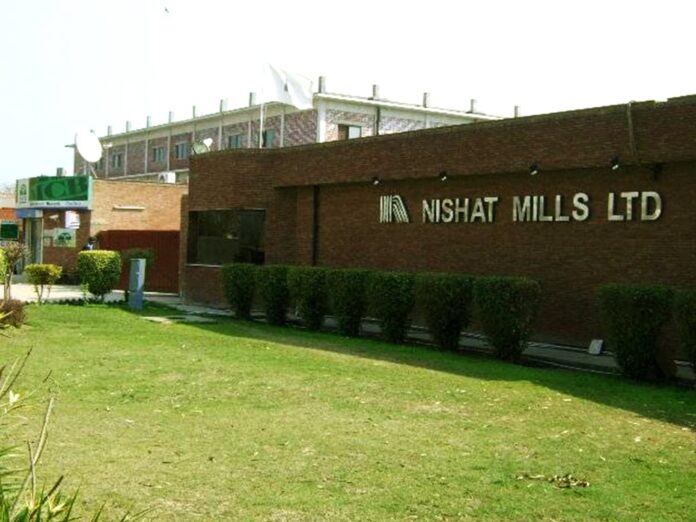
You may have seen the same posts floating around on your Instagram feed or Facebook timeline: a high-end fashion designer in Pakistan, showing off a brand new PPE (personal protective equipment), with an added note about how many the designer plans to donate. The designer earns some brownie points, the government is criticized for not stepping up on the PPE front, and you move on. No one is discussing what the actual textile sector of Pakistan is doing.
Here is the truth: the textile industry is receiving a lot of orders for PPE-related fabric. This is good news for both this country’s doctors, and also for textile mills. Now, the bad news: these orders are simply not enough. They are often one time, non-repetitive, and have low margins. Even Nishat Mills, arguably the poster child for the textile industry, is struggling in this Covid-19 situation, argued Umer Farooq, a research analyst at AKD Securities, an investment bank, in a note issued to clients on June 9.
Nishat Mills falls under the bracket of ‘export-oriented’ sector. This sector has been the hardest hit by the Covid-19, due to both demand and supply disruptions. The month of April was particularly brutal, when textile exports stood at $0.95 billion, which is a multi-decade low, according to data from the Pakistan Bureau of Statistics. This was aggravated by the strict domestic lockdown. Garment exports fell 73.4% year-on-year and 70.6% month-on-month; knitwear fell 61.7% YoY and 56% MoM; while bed-wear fell 57.5% YoY and 53.1% MoM.
Thankfully, it was only up from there: exports in May rose 45% when compared to April. They were buoyed by pent-up demand and relaxations in lock-downs across the globe.
However, on a yearly basis, exports in May still fell 33.6%. “Our correspondence with the leading exporters suggests an overall bleak picture over the short-medium term,” said Farooq.
So, what is going on? First, the aforementioned PPE problem. Most new orders booked have been for this fabric, but they have low margins. Second, the advance order book, which is usually booked for three to six months, has now been reduced to a few days. Third, fashion fabric has basically completely collapsed, the worst hit being denim. This makes sense: in the middle of a pandemic, the last thing on consumers’ minds is where to buy the latest jeans. New orders in this area are close to none. Even though there was a significant backlog, clients canceled due to lack of demand, and exporters were unable to deliver due to disruptions in the supply chain.
These conditions are creating the perfect storm for Nishat Mills: unprecedented weak demand, plant underutilization, and lower-realized prices.
That is why Farooq estimates that Nishat Mills in particular will face a decline of up to 40% in the fourth quarter of fiscal year 2020, and a decline of 30% in the first quarter of fiscal year 2021. This will also mean a contraction of 60 to 90 basis points in the margin at a gross level.
Previously, AKD research noted Nishat Mills’ predicted earnings as Rs12.8 per share for fiscal year 2020, and Rs16.3 per share for fiscal year 2021. But after these new insights, Farooq revised the earnings to Rs8.78 and Rs11, respectively.
Ok, but surely, a large enough company like Nishat Mills has some buffers in place for unprecedented shocks? That is correct. “Being the flagship holding company of Nishat group, portfolio income has historically cushioned NML during the times of stress in core textile business,” said Farooq.
And that is a significant cushion: in fact, income contribution from the portfolio companies to the company’s operating profitability stood at more than 50% in the last five years. Most of that comes from three sectors: power, banking, and cement.
However, Covid-19 is not just any shock. It is the kind of shock that affects every sector of the economy, including the ones listed above.
As is, the income from the power sector holdings had been limited. The liquidity crunch in the power sector meant that dividend income fell from the average of 37% between fiscal year 2014 and 2018, to just 17% in fiscal year 2019. But according to Farooq, the government’s tough stance on independent power producers, plus the effect of Covid-19, means that income is set to decline even further.
“We revise down our expectations for payouts by 40-60% over the investment horizon. This results in a reduction in portfolio value by PkR10.09 per sh,” said Farooq.
Covid-19 has also impacted banking, as the State Bank of Pakistan took aggressive measures to reduce the interest rate. This means that payouts from MCB bank, which is a major banking holding, are also set to decline.
There is one silver lining from the central bank’s actions, however. Cement holdings have improved, helped by a drop in commodity prices, as coal dropped 35%, and a support package from the government. In addition, there is a chance of loan deferral and an improvement in cement operations in the medium term. Farooq estimates that D.G. Khan Cement Company will show payouts of Rs0.8 per share in fiscal year 2021, and Rs2.25 per share in fiscal year 2022.
So the final verdict? Nishat Mills will still survive. “Despite the afore-said challenges in the near to medium term, NML is relatively better positioned to weather the COVID storm due to vertically integrated textile operations and diverse income stream from the portfolio companies.” said Farooq.



